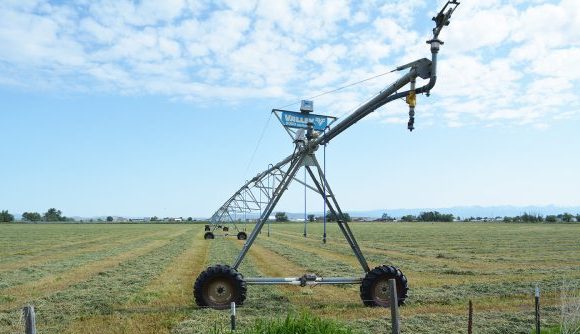Other views: The rural-urban divide
Published 7:00 am Wednesday, November 16, 2022

- Hockett
I have a split personality. My body lives in Newcastle near Seattle but my mind often lives in the 1950s and 1960s on Prairie Creek during haying season, or feeding the cows at 5:30 a.m. in 5-degree darkness; or out on The Divide rounding up the cattle for Labor Day, or in the Upper Imnaha that summer for the Forest Service.
In Newcastle, I’m physically engulfed by a dynamic multicultural existence of affluent post-college educated citizens and yet I am mentally separated from them. The physical outdoor existence of ranching and farming is unknown to people who attended large suburban schools, spent time mostly inside, never got dirty and cold working outside and go to a gym for exercise.
I enjoy the city and its many accessible amenities and creativity, but lately I have been disturbed by the bitter resentment expressed between rural and urban Americans.
Of course rural versus urban is an old phenomenon. Rural Sparta attacking the haughty Athenians in 500 B.C., Visigoths (barbarians) from North Central Europe invading luxurious Roman villas, the wealthy medieval Italian city states ruling the rural peasants, rural Southern slaveholders fighting the wealthier urban Yankees, wealthy, powerful London ruling harshly over a mostly rural British empire, Brown Shirts from rural Bavaria despising the snobby liberal Berliners, Mao inciting rural Chinese against the urban intellectuals and Trump inciting rural-minded supporters to storm the nation’s capital.
This divide has always simmered just below the surface of our cultural existence. But historically the city and the country have always been inextricably connected. Sparta was eventually absorbed by Athens; the Visigoths admired the easy living of the Romans and were assimilated into Roman culture, hundreds of thousands of members of the British Empire migrated to London to live, rural China is emptying out as the young move to cities for income and culture.
Most of the students at the old Joseph High School building during my years there moved out of the county shortly after graduating and only return for visits. Even now, retired farmers leave for Boise, Hermiston or other more urban locales with a milder climate. Those returning to the county are mostly retirees leaving urban areas for a less stressful existence closer to the natural world and bringing their income with them.
Historically, there has always been, like the ceaseless ocean tides, a coming in and moving out from rural to urban and back to rural. A problem arises when interlopers intervene to exploit this natural division.
In the 21st century, this ancient divide is being exploited to an extreme degree by the giant corporations who own radio, TV and internet social media platforms. There is money to be made in stirring up divisive beliefs to generate revenue on click-bait websites and improve advertising ratings. This is giant corporate capitalism at work — not main street entrepreneurialism.
Human nature is such that passions can be inflamed easily with a few volatile words. In 1693, in Salem, Massachusetts, 200 people were accused of being “satanic witches” and 19 were executed. In the 1870-80s the phrase “Yellow peril” was used to inflame hatred against Chinese immigrants leading to the execution of 21 Chinese minors on the Snake River. In 2022, Putin pronounced that Ukraine had been captured by “Nazis fascists” and Russian loving Ukrainians needed to be “liberated.” All words with white hot content.
Today, there are two main underlying differences between rural and urban people which adds fuel to this inflammation. First, an immense economic imbalance has grown between the two and second, there is a yawning cultural gap.
It is simply harder to make a living in rural America in 2022 than it was in 1955. The main reason is the inflated cost for goods and services. In the ‘50s my mother and father easily paid the doctor bill out of the proceeds from selling the cattle and wheat in the fall, no need for a medical policy. Medical expenses were affordable.
Now, a serious illness can send the family into bankruptcy. In the ‘60s I could earn enough in my college summers of working for the Forest Service at $2 per hour to pay 75% of my college expenses. Today, this would barely pay for your books.
Back then, earnings and expenses were more in balance. Since then, urban people’s earnings have grown and kept up with inflation. Rural incomes have not kept up resulting in an economic crises in rural areas.
Culturally, cities are more accepting of lifestyle differences than rural areas, and so people move to the city for this reason, as well as economics. This always leads to a broader spectrum of behavior in the city. The fringes of this spectrum are often militant in expressing their views, like the 2020 disorders on Capitol Hill in Seattle.
This is a small 10-block area containing less than half of 1% of the metro area. The media talking heads presented it as lawless Seattle burning to the ground. For the other 99.5% of us, it was just a small sideshow by the fringe. The media giants have found that focusing on issues like sexual orientation or religious, racial and economic differences plus immigration leads to higher profits, so they keep at it, day after day.
Except for the economic issues, most rural people don’t experience these social issues as a community (perhaps privately they do, if they are in the minority) so they believe the cities have run off the rails.
I’m not sure what the solution is, but allowing giant media corporations to exploit and manipulate one’s impressions for profit is not working for the survival of democracy in the 21st century.
Do you have a point you’d like to make or an issue you feel strongly about? Submit a letter to the editor or a guest column.









